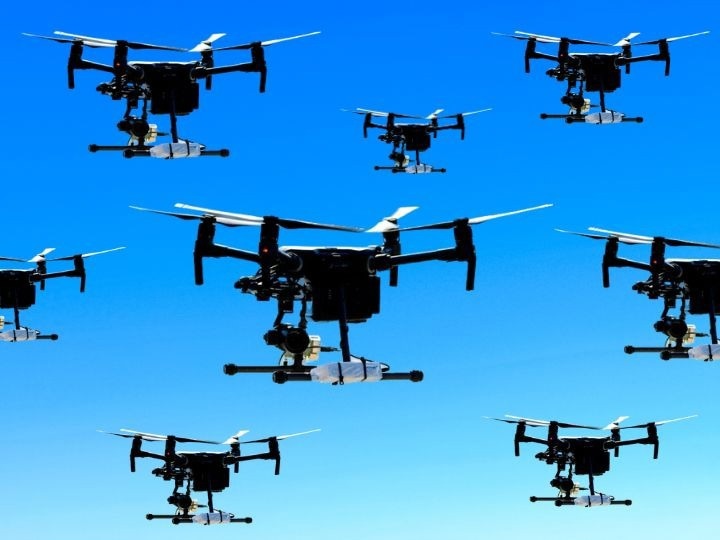The idea that robots are the ideal tool to liberate people from dull, dirty, and dangerous jobs—the “3 Ds” in industry parlance—has been around for a while, and flying robots (drones) are leading the charge.
 As the importance and numbers of drones have soared, their swarm mechanics have remained largely dormant. While it is now possible to fly large numbers of drones in sync, these swarms are preprogrammed by teams of animators and are refined with hours of computer simulations. Image Credit: University of Houston
As the importance and numbers of drones have soared, their swarm mechanics have remained largely dormant. While it is now possible to fly large numbers of drones in sync, these swarms are preprogrammed by teams of animators and are refined with hours of computer simulations. Image Credit: University of Houston
Low-cost drones are now widely used for a broad range of tasks, such as remote sensing, situational awareness, material delivery, and serving as communication relays. Heady stuff, even military, requires the deployment of swarms of drones rather than a single drone at a time to carry out missions.
However, despite their increasing relevance and population, their swarm mechanisms have mostly stayed dormant. While it is now feasible to coordinate the flight of several drones, these swarms are prepared by teams of animators and improved by hours of computer simulations.
But what if the drones themselves had a dynamic response to objects, moving objects, predators, and swarms of insects? It is a concept that fish swimming in schools and birds flying in flocks have long since grasped.
These movements are not pre-programmed but are based on local decisions by individual birds or fish.
Aaron Becker, Associate Professor, Electrical and Computer Engineering, University of Houston
Becker is developing algorithms to use these same ideas to provide coordinated control of drone swarms, enhancing their fleet-like service delivery. Kostas Research Institute at Northeastern University, LLC has committed to funding his studies with a $1.7 million grant.
On Becker’s team are associate professor of mathematics Daniel Onofrei, assistant research professor of electrical and computer engineering Julien Leclerc, and electrical and computer engineering professor David Jackson.
Becker added, “The majority of current research on swarms follows the same pattern and either relies on offline computation or uses simple rule-based logic such as ‘don’t bump into your neighbor while following the leader.’ Computers are great at fast computation and implementing tactics, but humans can excel at strategic decision making. We want to combine these.”
He further stated, “We want our swarms to behave optimally yet respond fluidly to changes in the environment. We aim to use computation on drones to locally make smart decisions, relay that information to the operator’s computer to make clear visualizations, and let the human operator make high-level decisions.”
Two preliminary application scenarios will be investigated. The first scenario involves aerial sensing of a forest fire, in which the drone swarm must both monitor and communicate with firefighters.
The second scenario involves aerial surveillance of a company building and campus. Drones must accompany vehicles entering and exiting the campus; however, each drone has a limited battery life and must recharge when the batteries run low.
Becker is no stranger to robotics. Becker, who has spent years studying and designing robotics, is now applying his knowledge to improve drone swarms. He has previously worked on directing vast swarms of robots and investigating methods in which just a few instructions were required to guide large numbers of robots to execute tasks.